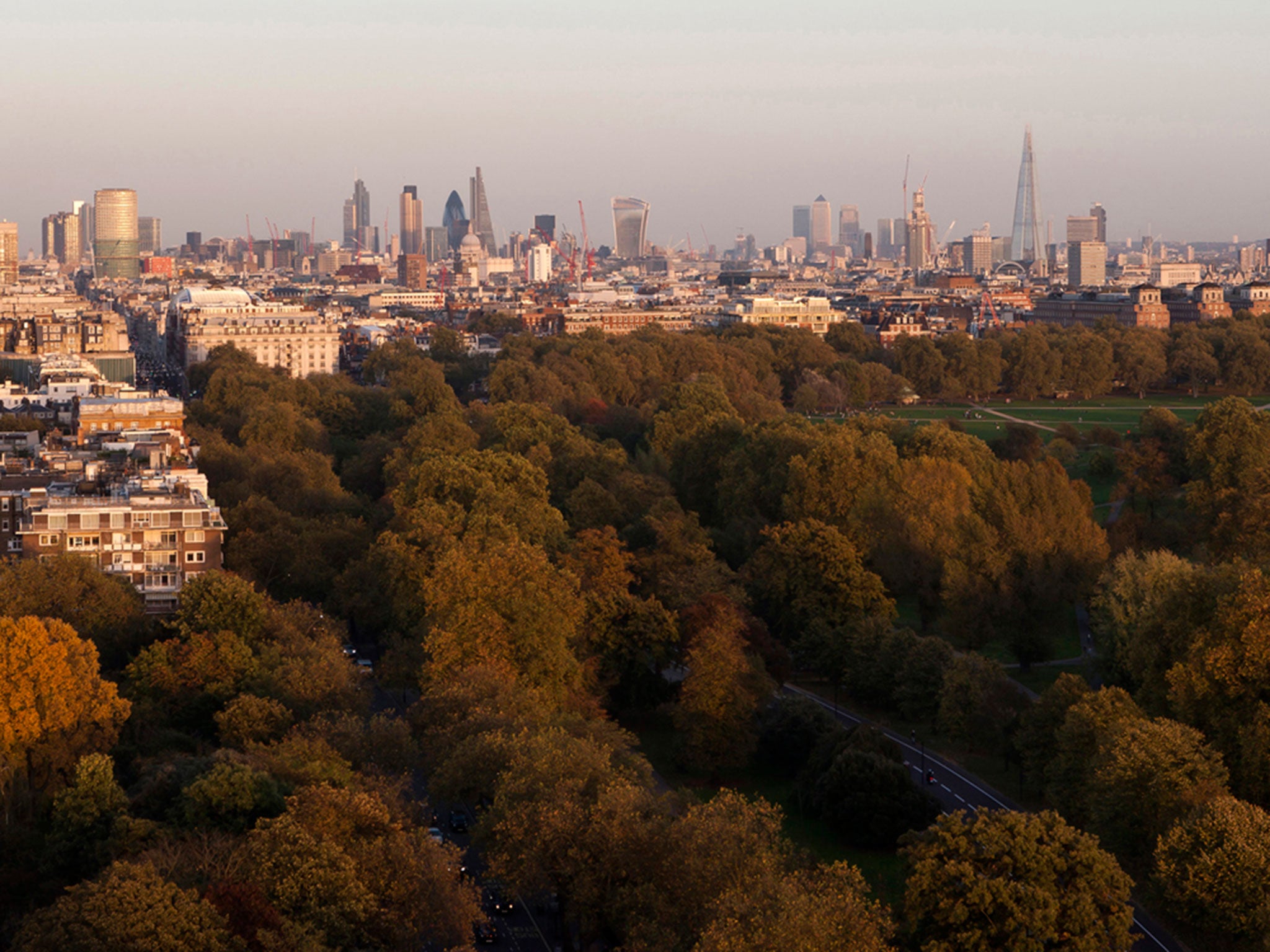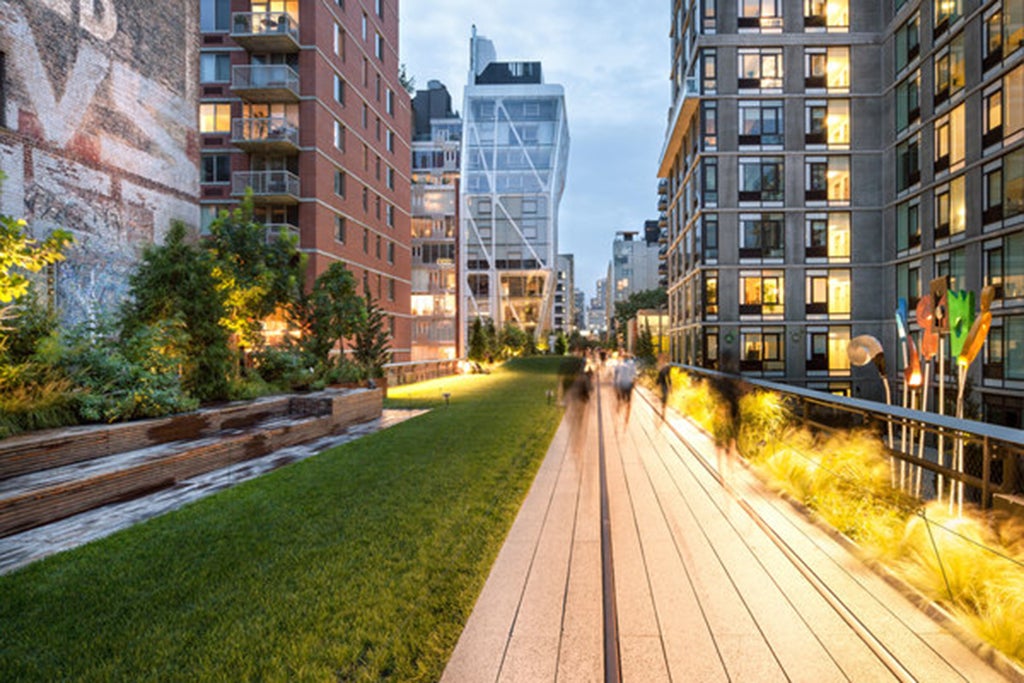Parks help cities – but only if people use them

Your support helps us to tell the story
From reproductive rights to climate change to Big Tech, The Independent is on the ground when the story is developing. Whether it's investigating the financials of Elon Musk's pro-Trump PAC or producing our latest documentary, 'The A Word', which shines a light on the American women fighting for reproductive rights, we know how important it is to parse out the facts from the messaging.
At such a critical moment in US history, we need reporters on the ground. Your donation allows us to keep sending journalists to speak to both sides of the story.
The Independent is trusted by Americans across the entire political spectrum. And unlike many other quality news outlets, we choose not to lock Americans out of our reporting and analysis with paywalls. We believe quality journalism should be available to everyone, paid for by those who can afford it.
Your support makes all the difference.In cities, access to parks is strongly linked with better health for both people and neighbourhoods.
Children suffer higher rates of obesity when they grow up in urban areas without a park in easy reach. Because low-income neighbourhoods have fewer green spaces, poorer children are most likely to face other health problems too, including asthma due to poor air quality.
But access to green space is not the only ingredient in creating healthy communities, my research on urban landscapes shows. Parks are good for people only if people use them.
And that’s a question of design.
The first truly public park – a green space paid for by public funds, on publicly-owned land and intended to serve the public – was Birkenhead Park, near Liverpool, England. Designed by Joseph Paxton to improve the health of the poor, it opened in 1847 to a crowd of 10,000.
When landscape architect Frederick Law Olmsted visited Birkenhead in 1850, he was inspired to bring the idea home to “democratic America”.
In 1857, he and architect Calvert Vaux won the competition to create Central Park in New York City. Their now iconic design – 750 acres of grassy lawns, trees and winding paths – came to define what Americans and Europeans alike have come to expect from a great urban park.
Olmsted would eventually design over 100 big, green parks, from Montreal and Buffalo to Louisville and beyond.
As cities commissioned more parks, an entire profession grew up around them.
Landscape architects built parks in big cities worldwide, each modified slightly to reflect local culture.
Americans, in particular, embraced sociologist WEB Du Bois’s belief that green space would “restore the bodies, minds, and spirits of urban dwellers weakened by the city’s punishing environment”.
Public parks can work their magic only if they give people what they need. That differs from population to population.
Scholars, historians, feminists and African-American leaders have observed that people perceive and use green spaces differently depending on their community’s historical experience and cultural standards.
Freeway Park, opened in 1974 in Seattle, is a densely-wooded urban landscape nestled between two highways. The park is seen by many as intimate and lush. But some women feel unsafe walking alone there because, they say, they can’t see who is approaching or coming up behind them.
Meanwhile, African-Americans in the South may feel unwelcome in parks named after Confederate generals and featuring large Confederate statues. Generally speaking, black people are underrepresented as visitors to the US National Park system, a statistic experts attribute to the historic legacy of segregation in public spaces.
Similar segregated use shows up with New York’s High Line park. The park, which had its first phase opening in 2009, runs through the Chelsea neighbourhood of Manhattan, which is home to several public housing projects.
Nearly one-third of the area’s residents are people of colour. High Line visitors, on the other hand, are overwhelmingly white.
In community forums, locals say they don’t perceive the park – a repurposed elevated railway – as having been built for them. If they don’t see people who look like them using it, they may stay away.
In other words, the mere existence of a park does not ensure that a community benefits from it.
This fact has given rise to new kinds of parks – ones uniquely designed for local communities.
In 1967, the firm Zion Breen Richardson Associates created the “pocket park” concept with Paley Park in New York City. Small and privately owned, but opened to the public during the work day, this park occupies just one-tenth of an acre and is surrounded on three sides by tall buildings.
Many downtown districts are now speckled with these tiny, often hidden, parks. There’s nothing grand about them, but for workers needing a break, they offer much-needed respite.
More recently, when designers began work on San Francisco’s shorefront India Basin Park, the landscape architects on the team realised that access points had to be a design priority. Certain nearby residents – namely, those living in the predominantly black Hunters Point neighbourhood – would struggle to use the park, despite its proximity. A shoreline road built decades ago had cut their upland community off from the water’s edge.

Rehabilitated walkways from Hunter’s Point to the waterfront, then, will inform the design of the park, which will be developed over the next 15 years. The planned paths, stairways and crosswalks should offer their own type of “green” landscape, one that meets the needs of the current residents and is historically appropriate in hilly San Francisco.
Latino residents in southside Wenatchee, Washington, have also been teaming with designers to develop a new design that might attract more neighbours to their underused local park, the Kiwanis Methow Park.
Drawing on Mexican influence, the transformed park will feature a “kiosko” pavilion that hosts mariachi music, dances and culturally significant celebrations.
Dozens of “padrinos,” or godparents, have signed up to maintain the park, whose new design was spearheaded by the Trust for Public Land and the landscape architecture firm Site Workshop.
Context-specific design crosses international borders in other ways.
In a shantytown outside Lima, Peru, residents teamed up with the University of Washington to build a school garden that is also open to the public.
During school hours, the outdoor classroom teaches local students about local plants, including some that are edible. Other times, it doubles as a quiet place of respite for community members in this sprawling, dense and noisy neighbourhood.
Frederick Law Olmsted and WEB Du Bois were right: Cities need parks. But designers have come a long way over the last century in learning that green spaces can only help cities when residents embrace them.
Thaisa Way, professor, historian of design, urban landscapes and women as professionals, University of Washington. This article is republished from The Conversation (www.conversation.com)
Subscribe to Independent Premium to bookmark this article
Want to bookmark your favourite articles and stories to read or reference later? Start your Independent Premium subscription today.
Join our commenting forum
Join thought-provoking conversations, follow other Independent readers and see their replies
Comments